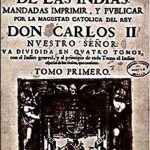The Christian Church first came into Britain through the north of Ireland and Scotland, probably with St. Augustine. The Roman Catholic Church was soon established throughout Ireland, Scotland and England, ruled inexorably from Rome by the Pope. The Pope’s bishops then ruled both the Church and much more, in association with kings of England when they established themselves. The first king of all England was a Norman Viking called William the Conquerer, and he was a Catholic and a bastard.
The British had several centuries of religious rule fromRomethrough bishops, abbotts, monks and priests. Thousands of Masses were said and thousands of acres were obtained by the clergy, as well as benefits and tithes. The True Church did not make itself popular with the masses.
A British king who was himself Angevin French (Henry II) named one of his trusted friends (Becket q.v.) as his Archbishop of Canterbury thinking that he could rule both England and the Church through him as a puppet. Sadly for Henry (and Thomas Becket) this turned out to be a false premise. Becket, as Norman as Henry himself but not of royal blood, turned against his king and tried to get assistance from the Pope in Rome and the king of France in Paris in his Church’s battle with Henry and his barons. As we know, this ended badly, but the Pope made Becket, whom he had not helped at all – a Martyr and Saint (see left, the end of a ‘troublesome priest’).
After this incident the ordinary people began questioning Roman Catholic practices, and were often found heretic and burnt, which shows how much had changed in the Church founded by Jesus Christ, who preferred to save people and their souls rather than burn them.
Thus, the reign of the English monster Henry VIII was made rather different by the monarch conniving with his Minister Thomas Cromwell to disestablish the Roman Catholic Church and establish the Church of England. This new arrangement would provide Henry and his nobles with the chance to grab back from the clergy all their land, churches, cathedrals, mansions and money that they had been hoarding for centuries. This was the time of ‘The Reformation’
The arrangement also gave Henry his second wife, for having thrust away his royal Spanish (and therefore Catholic) wife Catherine of Aragon, he was able to marry a pretty girl called Boleyn whose sister he had already ‘met’. The divorce was managed by Cromwell, but he could not arrange corporeal matters between Henry and Anne Boleyn so there was no boy prince. Only girls. Englandwas left with the Princess Mary (daughter of Catherine and therefore Catholic) and Elizabeth who would become Gloriana and Protestant and encouraged her troops to fight against Philip I of Spain(very Catholic q.v.).
But by now England was ruled religiously by the established Protestant Church, and any Catholics around who might not like that became recusant or dead. In fact the Catholic religion survived in Britain because there were so many recusant families who inhabited houses large enough to keep secret cells in the thickness of their walls – where they kept Catholic priests who came out of the hiding places long enough to say Mass and provide Sacred Communion.
Charles I’s second son James tried to rule as the Catholic James II after the death of his brother Charles II, but England was not having that and a number of ‘patriots’ including the ‘King’s friend’ the Duke of Marlborough organised the arrival and triumph (‘The Glorious Revolution) of a Protestant King William III (Dutch). The granting of full political and civil liberties to England and Irish Roman Catholics had been partially achieved by the late seventeenth century, but Parliament passed the Test Acts which limited holders of public office to Anglican (Protestant) communicants. Until 1745 the Jacobite threat from Scotland justified continual discrimination against RCs. Indeed fears of Catholic emancipation led directly to the Gordon Riots in 1780.
InIreland, meanwhile, where a majority were Catholics, concessions were made from 1778 onwards, ending in the Relief Act of 1793 passed by the Irish Parliament. It gave liberty of religious practice and the right to vote in elections, but not to sit in Parliament or hold public office. William Pitt was convinced of the necessity of full Catholic emancipation and made promises to the Irish Parliament within the Act of Union in 1800. This time it was the (Protestant) King George III, and Protestant Irish landlords who were not having any of it. Pitt resigned. In 1828 Daniel O’Connell won a parliamentary election for County Clare but could not take his seat because he was a Catholic!
When the Duke of Wellington, old but still wise, became PM he reluctantly introduced the ‘Relief Bill’ to avoid civil war in Irelandwhere emancipation dissidents were devoted to stirring up trouble. The 1829 Act removed nearly all civil restrictions. Catholics built their own churches and chapels; hidden priests came out of their ‘priest’s holes’; Catholic bishops were directed from Rome again; people were not burnt for their Faith – but the only restriction to survive intact to the present day is that no British Monarch may be a Roman Catholic. So much for Catholic Emancipation.









Leave A Comment